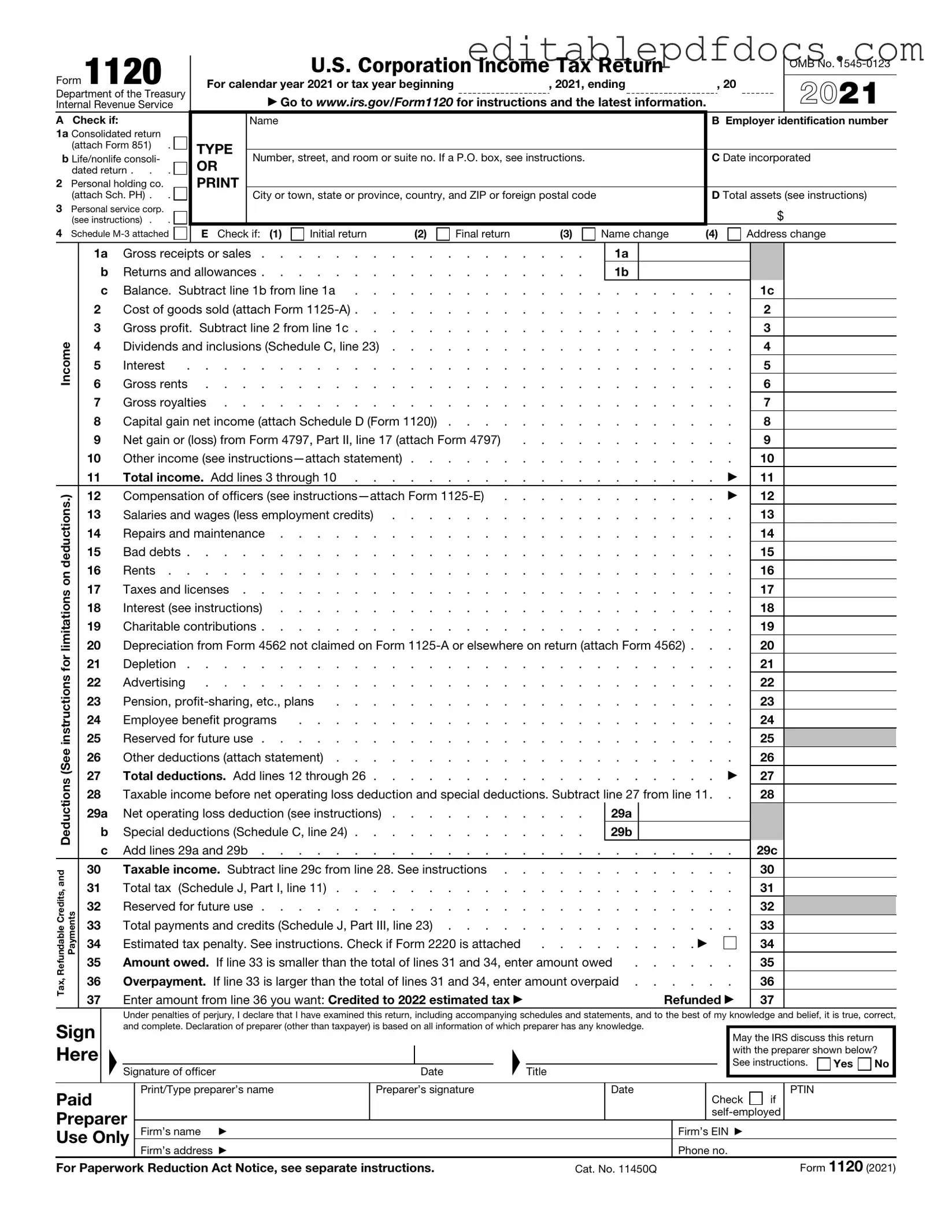Fill a Valid IRS 1120 Template
The IRS 1120 form is a tax return used by corporations to report their income, deductions, and tax liability to the Internal Revenue Service. This form plays a crucial role in the financial reporting process for corporations, ensuring compliance with federal tax laws. Understanding how to accurately fill out the 1120 form is essential for any corporation aiming to navigate its tax obligations effectively.
Ready to tackle the IRS 1120 form? Click the button below to get started!
Open Editor Now
